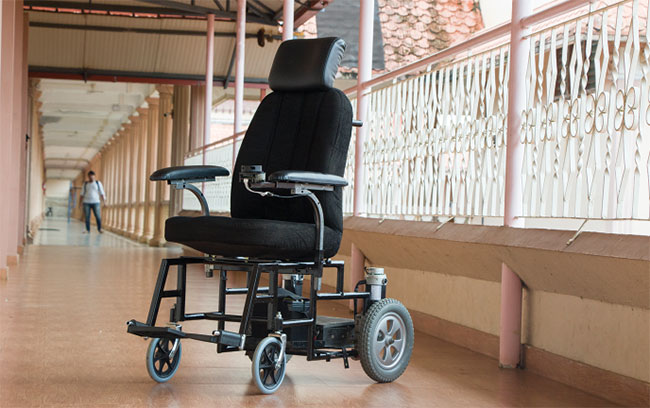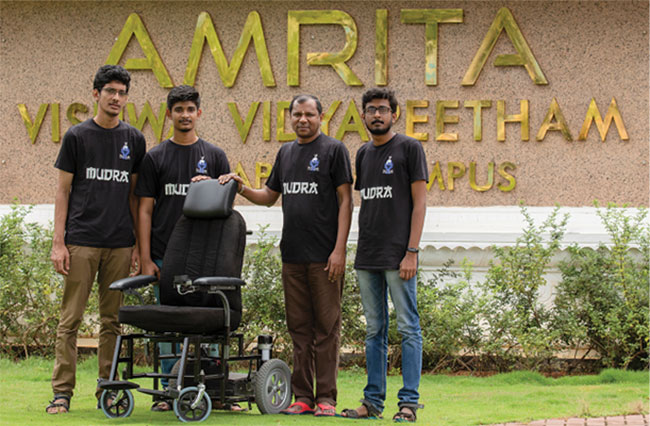People with mobility issues who rely on wheelchairs could gain a little more independence, thanks, in part, to lidar, a robotic operating system (ROS) for autonomous navigation, and a new wheelchair known as the Self-E.
Researchers at the Humanitarian Technology (HuT) Labs at Amrita University in Kerala, India, have developed the self-driving wheelchair with Android-based VIVO smartphones and RoboPeak Lidar (RPLIDAR), a 360°, 2D laser scanner development kit.
RPLIDAR creates a map of the surrounding area, along with static and dynamic obstacles. The map is then automatically loaded onto an Android smartphone or tablet through HuT’s specially developed app called Mudra. The user can touch any point on the generated map and Self-E will drive to that place automatically without user intervention. The app does not need the internet and is not GPS-dependent. The wheelchair runs on a rechargeable battery.

The Self-E wheelchair uses the robotic operating system (ROS) for navigation and allows patients to commute from one place to another. Courtesy of Akhil Raj/HuT Labs/Amrita University.
Led by professor Rajesh Kannan Megalingam, director of HuT, three engineering students — Raviteja Chinta, Akhil Raj, and Sarath Sreekanth — assisted with the project.
Megalingam told Photonics Media that Self-E can safely take a user from one point to another in an area of 300 to 500 m, by navigating its own path in an indoor environment.
“This can be of great use in airports, hospitals, shopping malls, industry, etc.,” Megalingam said. “Smart carts can be developed based on this technology, which will be part of revolutionizing the shopping malls and industry.”
Megalingam got the idea for the Self-E wheelchair after seeing Google’s self-driving car during a visit to the Computer History Museum in Mountain View, Calif.
“The prototype is already here, and we are working with our own in-house tech lab for commercialization and marketing,” he said. “This is the cheapest wheelchair in the world, as we used only one lidar sensor, a wheelchair, and a mobile phone, and there is no other extra controlling device.”

Self-E team: (from left) Akhil Raj, Raviteja Chinta, professor Rajesh Kannan Megalingam, and Sarath Sreekanth. Courtesy of Akhil Raj/HuT Labs/Amrita University.
The researchers used ROS to develop an algorithm for the wheelchair to map the environment and plan the correct path to a destination. They used the RPLIDAR along with the ROS to help the wheelchair avoid obstacles along its path, and to enter and exit a door.
The autonomous wheelchair works in three different modes: automated, fixed-automated, and manual. Once the map is loaded, in the automated mode the user can navigate to any place on the map by touching the destination. In the fixed-automated mode, the user cannot touch and navigate, but there is a point of reference and the wheelchair takes the user to that spot. In manual mode, users can give directions on the phone by tapping it if they want to go somewhere in an unmapped room.
Self-E has been tested and evaluated at Amrita Institute of Medical Sciences by patients and doctors. Megalingam and his team plan to test it at airports next, and they hope to add features to the app that will contact the patient’s family, nearest hospital, or police station in case of an emergency.